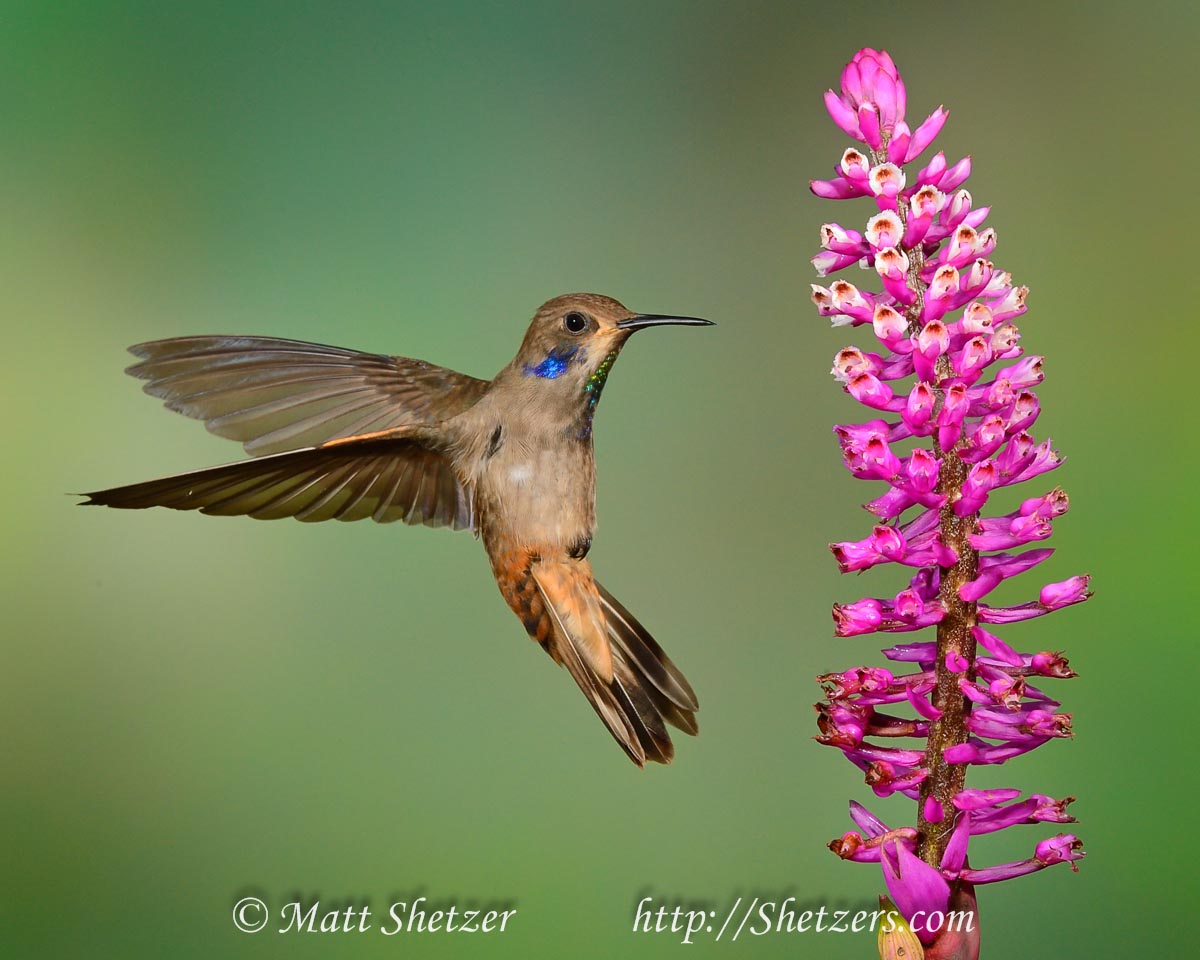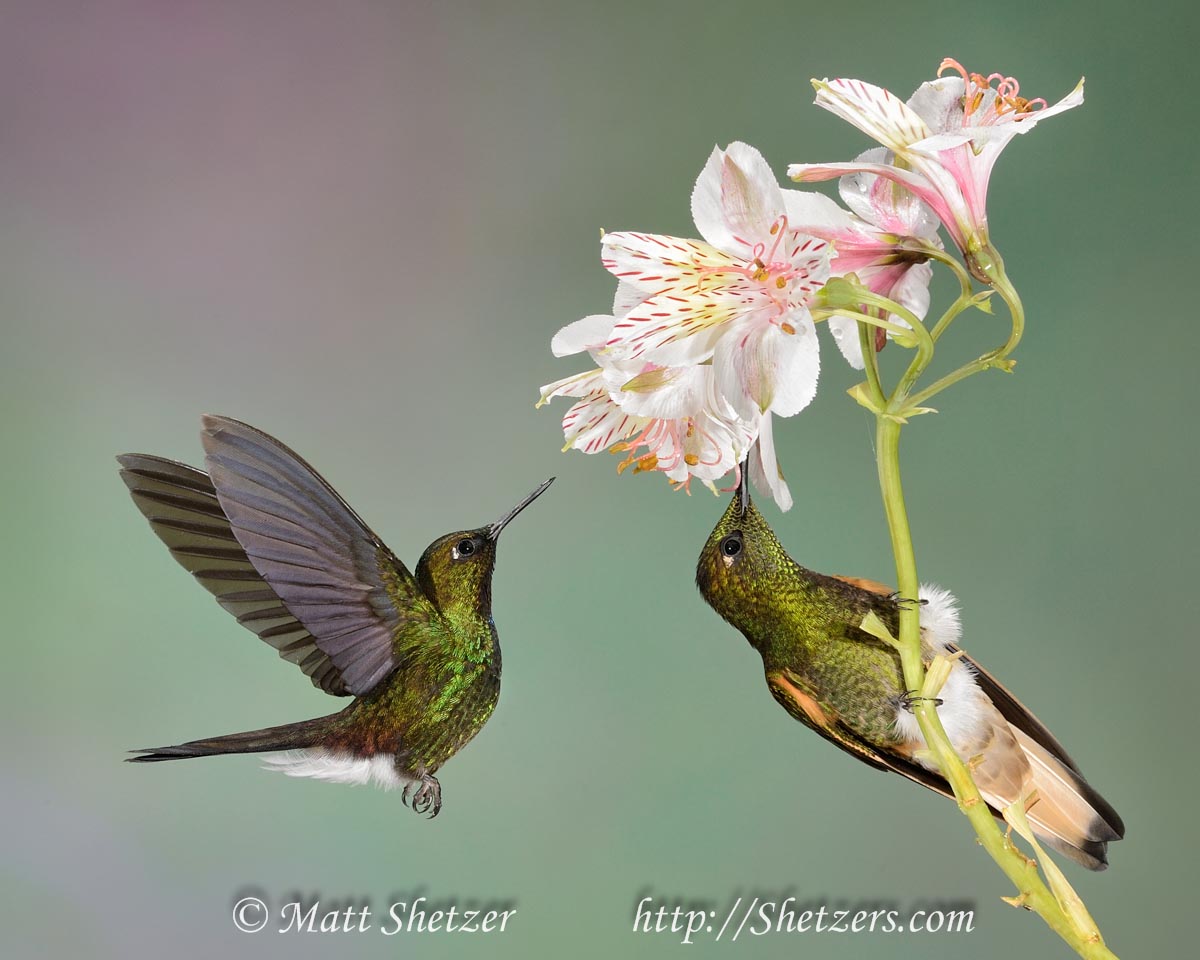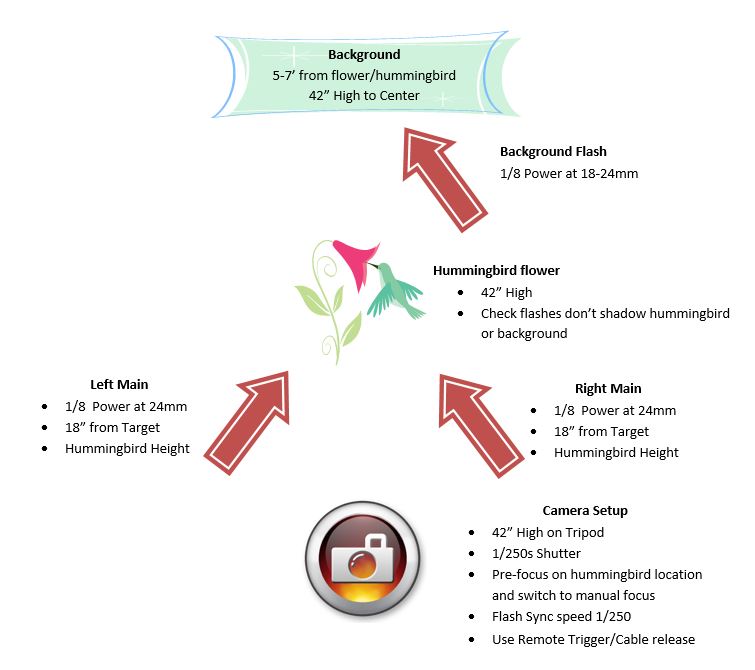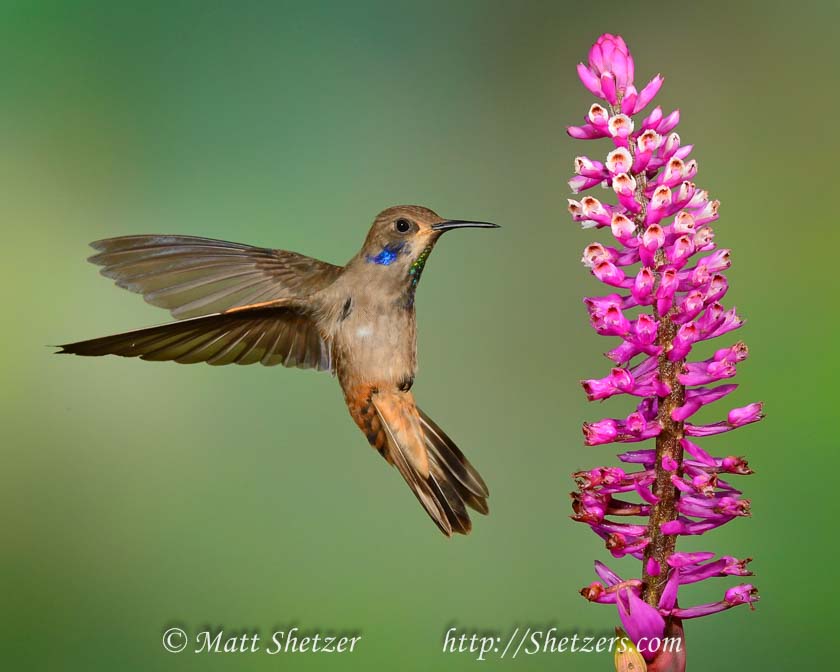Hummingbirds are some of the most extraordinary birds found on the planet. But establishing the proper techniques to photograph these remarkable little birds requires a set up that’s just as unique as they are.
 There are two ways to photograph hummingbirds – by using natural light and by using a multi-flash set-up. Hummingbirds’ wings move at about 80 beats-per-second, fast enough to produce their signature hum. So, it can be almost impossible to produce an adequately sharp (with details in the wings) and properly exposed hummingbird photograph using only the light Mother Nature provides. Luckily, photographers have come up with techniques to freeze the hummingbirds’ wings in their tracks, and produce beautiful, natural-looking photos by invoking a few tricks of the trade. The most popular and effective way to take quality hummingbird photos is by using a high-speed multi-flash setup.
There are two ways to photograph hummingbirds – by using natural light and by using a multi-flash set-up. Hummingbirds’ wings move at about 80 beats-per-second, fast enough to produce their signature hum. So, it can be almost impossible to produce an adequately sharp (with details in the wings) and properly exposed hummingbird photograph using only the light Mother Nature provides. Luckily, photographers have come up with techniques to freeze the hummingbirds’ wings in their tracks, and produce beautiful, natural-looking photos by invoking a few tricks of the trade. The most popular and effective way to take quality hummingbird photos is by using a high-speed multi-flash setup.
The Multi-flash Setup
The multi-flash setup produces a strobe effect much like the one you might see in a night club. Each time the strobe pulses through the crowd, it freezes the scene at a moment in time. Hummingbird photographers surround their subjects with a lighting configuration that freezes the bird in its tracks each time they trigger the flash setup. The use of several flashes enables photographers to capture the moment at remarkable speeds – freezing the scene at speeds of up to 1/10,000 of a second.
Each flash is arranged to surround the bird at an angle that produces the most natural-looking light. This flash-set up creates an outdoor studio for hummingbirds to pose. Native flowers are set on center stage to allure hummingbirds in, and a backdrop set at the rear of the configuration is used to create a natural-looking background.
Once the flash setup is complete, all the photographer has to do is sit back and wait for their colorful little subjects to arrive. Hummingbird photographers use radio triggers to signal the flash to pulse simultaneously as the photo is taken. The triggers are useful because they prevent cables from getting in the way. The remote radio triggers also allow photographers to watch the action with their eyes as it happens, not through the viewfinder. Because hummingbirds are so tiny, photographers are recommended to use telephoto lenses ranging from about 200 mm to 400 mm. The use of high apertures will also allow photographers to get sharp images of the tiny birds with enough depth of field to capture the scene in focus. 
Beginner’s guide to hummingbird photography
Basic setups can start with 3 flashes, while more sophisticated setups can include as many as 8.
Flashes are programmed to manual mode and configured to a quick pulse of about 1/8 power with a radio trigger. As a rule of thumb, a flash power of 1/8 will capture the moment at 1/2500 second; 1/16 equates to 1/5000 of a second, and 1/32 power equals 1/10,000s of a second. The more flashes you have, the less power you need to output – therefore achieving faster shutter speeds.
To achieve a basic multi-flash configuration, your camera should be set to 1/250 shutter speed and a flash sync speed of 1/250s. You can adjust ISO and aperture to achieve the proper exposure.
While we use a combination of about 7 to 8 flashes for our workshops, below is set up to help you get started at home and let the addiction begin using only three flashes. As your experience grows you can add more lights and set up more and more sophisticated configurations.

Shetzer’s Hummingbird photography workshops
With the proper set up, hummingbird photographers have the ability to capture crisp, clear photos displaying the vibrant, iridescent feathers that adorn the birds as they feed on exotic flowers. Experimenting with different set ups and backgrounds can be addicting – and hummingbird fans will find the results to be astounding.
Guests on Shetzer’s Photography trip will venture over mountain passes and into the lush rainforests of Ecuador on an 8-day adventure learning the tricks of the trade to capture exotic hummingbird images.
Click here to learn more about our Hummingbird photography workshops.
[singlepic id=3026 w=844]

